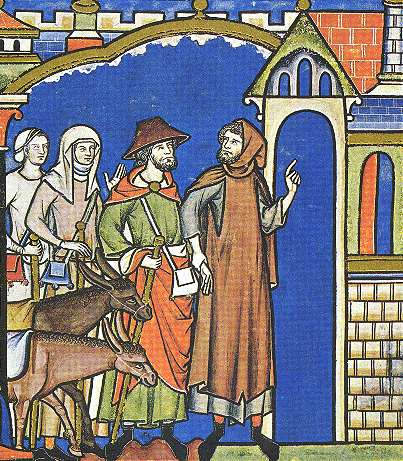
Medieval Dress in the 13th Century
During the 13th century, European clothing was characterized by its simple shapes, vibrant colors, and relative uniformity across the Catholic world.
Men's Fashion
Men wore layered garments, including a linen shirt, a tunic, and a surcoat called a cyclas. The cyclas evolved into several styles, including the garnache with cap sleeves and the gardecorps with generous sleeves. Men also wore hose, shoes, and headdresses, such as the beret or chaperon. Royalty adorned their clothing with luxurious fabrics and furs.
Women's Fashion
Women's clothing became looser-fitting and more modest compared to previous centuries. They wore long tunics over shirts, held together by narrow belts often embellished with metal plating. Surcoats were also worn, and wealthier women added embroidery and fur linings to their mantles. Headwear played a crucial role in women's fashion, with the barbette, coif, and crespine being popular choices.
Footwear
Shoes began to develop pointed toes, although they were less exaggerated than in the following century. Boots were primarily worn by men, while commoners opted for stockings with leather soles and wooden clogs.
Emerging Trends
The 13th century witnessed evolving clothing materials and styles. Wool remained dominant, but linens gained popularity. Colors and weaves became more diverse, with imported red and dark fabrics becoming fashionable. Sumptuary laws emerged to regulate clothing choices based on social status and profession, reflecting the growing influence of the Church and the desire for control over urban populations.
Interesting Facts
- The Kings of France adopted lapis lazuli-dyed blue as their heraldic color.
- Particolored clothing, known as "mi-parti," became fashionable.
- The Jewish hat, initially worn voluntarily, became enforced as a discriminatory marker.
- The Yellow badge originated in this century as a way to identify Jews and Muslims.